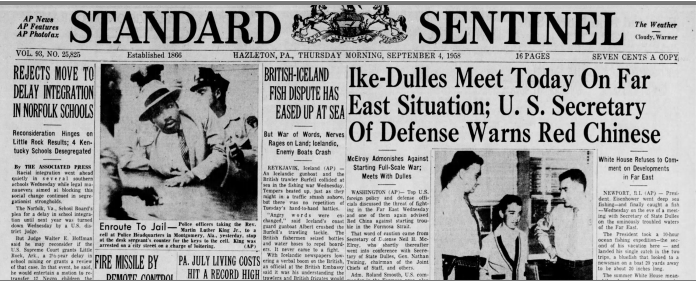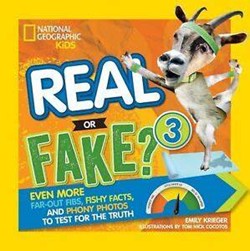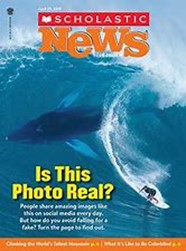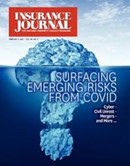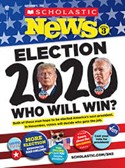Interrogating Photos-Important Visual Literacy Skills for 21st Century Students
by Frank W Baker (my contribution for the March 2021 blog)
Every day, images pass through our radar screens. They exist everywhere: on web pages, social media, newspapers, magazines, textbooks, mobile phones and more.
Photos get attention.
In Social Studies, for example, they are considered “primary sources”; in English Language Arts, they are the “non-print texts” that teachers use; and in the Visual Arts, they are media to analyze and create.
But who takes those pictures? (authorship); why do they take them? (purpose); where are they seen? (media, exposure); what might they mean? (interpretation); could they be altered? (manipulation). These are the kinds of “media literacy” questions that students should consider when studying photos.
How to Read A Photograph
Teaching “media as text” does not appear to be commonplace in American education. But it should be. “ A picture is worth a thousand words” is a common expression many of us have heard. Learning to read photos is not always a simple process, but when done properly, it can be rewarding to both the teacher and the learner. [Download and have your students consider the recommendations at Read A Photograph for more advice.]
Visual literacy often gets covered at the elementary level, but it’s been my experience that analyzing and interpreting images does not always receive the same attention at the middle school level. How can we change that: by exposing students to images and helping them learn to “read” and deconstruct them.
An Example
Here is a photo I’ve used in some of my most recent workshops and webinars. I leave off the caption so there is no context. Students may recognize the subject at the center of the image, but that is not the objective. Because so few of our students have had any real photographic/visual literacy training, they may not know HOW to interrogate an image.

Source: https://preaprez.files.wordpress.com/2011/12/martin_luther_king_1.jpg
A good way to start with students is to ask the simple question: what do you see? (They can create a list.) Because the caption has been omitted, they must examine it closely and make inferences based on their observation. Here are some questions you might use to guide their analysis:
– who took the picture? (since there is no caption, students must use their research skills to find the answer to this one) I previously wrote about photojournalist Charles Moore here.
– what is the setting? what are the clues?
– where was it seen/published? (students researching this image will find it duplicated many times on the web; but what about newspapers or magazines?) [Using a subscription database, I found this newspaper used a cropped image on its front page.]
– what was the photographer trying to capture? Why?
– notice the expressions on the people’s faces; what might they communicate?
– is there a story behind the image? (there is); what were the circumstances around his arrest? what might it reveal?
The original caption for the photo, written by the photographer, read: “Dr. Martin Luther King, Jr. is arrested for loitering outside a courtroom where his friend and associate Ralph Abernathy is appearing for a trial in Montgomery, Alabama.” 1958
Another Example
I use at least one historical image in all of my media literacy workshops to get teachers and students to conduct what I call a “close read.” This one fascinated me, especially when I learned the backstory that made the photograph and the photographer famous. This photo has a title: “Home of a Rebel Sharpshooter” and it is attributed to Civil War photographer Alexander Gardner. Right away, in this case, I have revealed more details about the image than the previous one.

Students may not question this soldier with a gun leaning against a cave wall at this location (Gettysburg, PA). But they might be surprised to learn that it was “staged.” According to the Museum of Modern Art: “analysis revealed that he (Gardner) had staged the image to intensify its emotional effect. Though this practice was not uncommon at the time, its discovery made the photograph the subject of controversy. Gardner moved the soldier’s corpse and propped up his head so that it faced the camera. He then placed his own rifle next to the body, emphasizing the soldier’s horizontality and the cause of his death.” (Source: same as URL below photo)
Students may be surprised, but the truth is: ever since the advent of photography, images have been manipulated. The manipulation of images is the subject of a web page I created entitled “Is Seeing Believing.” Many other useful resources can be found there.
Manipulated Images
In a now famous 2016 study, middle schoolers failed to question or verify a photo of what appeared to be “deformed daises” on a photo-sharing webpage which claimed the flowers were proof of the damage by the accident at a Japanese nuclear power plant. It is clear that photo altering has become a common practice in today’s media landscape and learning to question their authenticity is more important than ever.
In 2018 The New York Times asked readers to contribute examples of election misinformation. Readers came through with more than 4 thousand examples, many involved photos. Here is one:
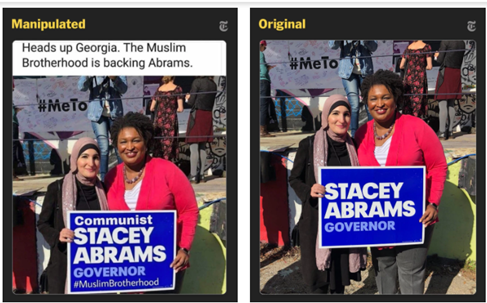
Both National Geographic and Scholastic have previously addressed the issue of altered images in their publications and having your students read these might also be helpful.
Verify The Image Activity
Many students post and repost photos they’ve seen online without bothering to validate or verify its authenticity. With that in mind, I created the VERIFY THE IMAGE activity- a web page of images that you can use to challenge your students’ critical thinking and viewing skills. You simply assign an image to a student (or group of students). It’s their job to document the steps they took to verify whether an image is real or not.
Now that your students have taken time to analyze images, they may feel better prepared to interpret the plethora of images that they might be exposed to on their social media/news feeds.
Activity Suggestion: Ask students to bring in a news photo (printed if possible) that they saw on Facebook, Instagram, Snapchat or any other social media they attend to. They should be prepared to present an “image analysis” to the class based on their research and investigation.
Images on Magazine Covers
In my regular blog posts, I’ve previously written about how to engage your students, for example, with the images that adorn magazine covers. In 2000, I co-hosted two webinars that centered around these covers: one about covers that represented the Pandemic and the other examined the way President Trump was represented during his four-year term. Watching either one of these will be helpful as you learn how to engage students in both visual and media literacy. [See my magazine database of both pandemic covers and Trump covers.]
As educators, you have access to magazines at home and at school (e.g. the school library). I maintain these magazine covers are texts you can use to teach visual literacy, symbolism and more.
So much of our world is visual. Helping students learn how to “read” images should be part of a 21st century education. I’d enjoy hearing how you engage students in “visual literacy.”
———————————————————————————————————————————————-
Frank W Baker is a longtime contributor to Middleweb. In a collaboration with Routledge, he authored the book “Close Reading The Media” which includes more ideas and resources in visual literacy and photography. He maintains the internationally recognized Media Literacy Clearinghouse website of education resources. He estimates that he has conducted hundreds of workshops with educators over the past 20 years. You can reach him at email fbaker1346@gmail.com and on Twitter: @fbaker
Recommended Resources:
Reading The Pictures (website/weekly analysis of current event images)
http://www.readingthepictures.org
Reading The Pictures ( archive of February 2021 webinar)
Civic Online Reasoning Evaluating Photos Lesson Plan (registration required)
https://cor.stanford.edu/curriculum/lessons/evaluating-photosd.edu
Evaluating Photos & Videos (video)
https://www.youtube.com/watch?v=p7uvqb8fcdA&t=538s
Techniques and Elements in Visual Communication
Visual Literacy: Definition & Examples | Study.com
Photo Fact-Checking In The Digital Age (tutorial, The News Literacy Project)
https://www.youtube.com/watch?v=Ewrx1lDhVPE&t=2s
What’s Going On In This Picture? (weekly New York Times Learning Network activity)
https://www.nytimes.com/column/learning-whats-going-on-in-this-picture
Discovering How Images Communicate
https://web.archive.org/web/20040610090936/http://nsli.ednet.ns.ca/units/uopattach/uopnm/imcomm.pdfrchive.org
Common Core in Action: 10 Visual Literacy Strategies (website)
https://www.edutopia.org/blog/ccia-10-visual-literacy-strategies-todd-finley
Focus On Photography: A Curriculum Guide (International Center of Photography, free book)
https://www.icp.org/files/icp_curriculum_guide_part1_0.pdf#:~:text=Focus%20on%20Photography:%20A%20Curriculum%20Guideis%20designed%20to,education%20in%20school%20and%20after-school%20settings,%20grades%20K-12.
Visual Literacy for Libraries (book)
https://www.alastore.ala.org/content/visual-literacy-libraries-practical-standards-based-guide
How To Read A Photograph Lessons from Master Photographers (book)
Publisher: Harry N Abrams
Close Reading of Photos and Graphics (worksheet, Scholastic/UPFRONT)
https://upfront.scholastic.com/content/dam/classroom-magazines/upfront/pages/promotion/010421/UPF-CloseReadingGraphics.pdf
Library of Congress Photograph Analysis (worksheet)
https://www.loc.gov/static/programs/teachers/getting-started-with-primary-sources/documents/Analyzing_Photographs_and_Prints.pdf
Explaining the Image (worksheet)
InvestigatingImagesSample.pdf (tc2.ca) (See page 3)
Rock On: Real or Fake? Gameshow (video; National Geographic)
https://youtu.be/Clh2ISdWJBk



